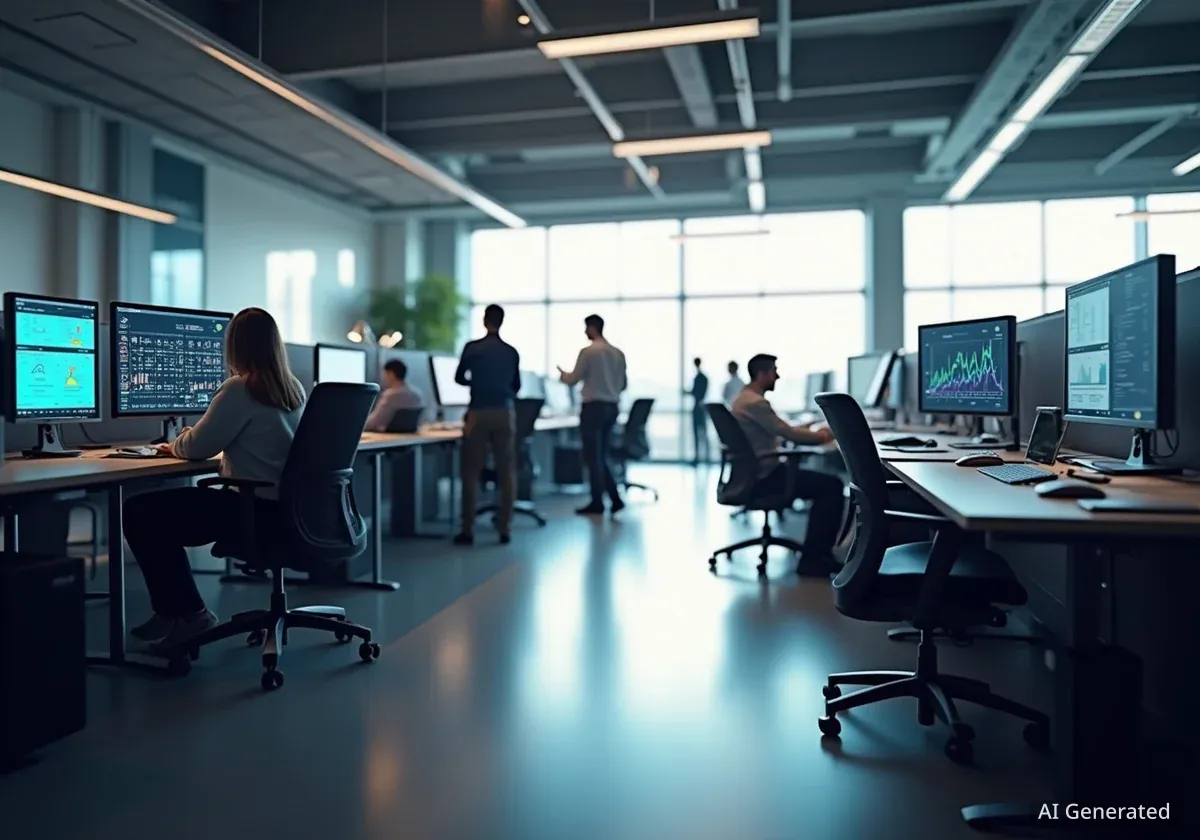The global experiment with remote work, sparked by necessity, has permanently reshaped the corporate landscape. As companies move beyond temporary fixes, they are now cementing long-term hybrid work strategies, creating a new set of challenges and opportunities for employees and leaders alike. The focus has shifted from merely enabling remote access to intentionally designing a productive and equitable work environment for a distributed workforce.
This evolution is forcing a fundamental rethink of everything from technology investment and office design to management training and company culture. While models vary, a clear trend is emerging: flexibility is no longer a perk, but a core component of the modern workplace. Businesses are now grappling with how to make this new structure sustainable for the long haul.
Key Takeaways
- Companies are moving from temporary remote policies to permanent, structured hybrid models.
- Significant investment is flowing into collaboration technology to support distributed teams and ensure equity.
- Maintaining a cohesive company culture and avoiding proximity bias are the primary challenges for leadership.
- The physical office is being repurposed as a hub for collaboration and connection, rather than individual work.
The Search for the Perfect Balance
The initial chaos of the work-from-home transition has given way to a more deliberate phase of strategic planning. Many organizations are settling on a structured hybrid approach, most commonly requiring employees to be in the office two to three days per week. This model aims to offer the best of both worlds: the flexibility and focus of remote work combined with the collaborative and social benefits of in-person interaction.
However, there is no one-size-fits-all solution. Different departments and roles have different needs, leading some companies to adopt a more flexible, team-based approach. Managers are now empowered to set schedules that work best for their specific workflows, a departure from rigid, top-down mandates.
From Reaction to Intention
The first phase of remote work was purely reactive, focused on business continuity. The current phase is about intentional design. Companies are analyzing productivity data, surveying employees, and running pilot programs to find a sustainable model that supports both business goals and employee well-being. This data-driven approach is critical to building a framework that lasts.
This shift has also put a new focus on outcomes over attendance. Performance metrics are being revised to measure productivity and impact, regardless of where the work is done. This represents a significant cultural shift for businesses traditionally focused on "face time" as a proxy for commitment.
Technology: The Backbone of the Hybrid Office
For a hybrid model to succeed, technology must create a seamless experience for all employees, whether they are at home or in the office. This goes far beyond basic video conferencing. Companies are now investing heavily in a new generation of collaboration tools designed for a distributed workforce.
These investments include:
- Smart Conference Rooms: Equipped with advanced cameras and microphones that can track speakers and ensure remote participants feel present in the room.
- Digital Whiteboards: Collaborative canvases that allow real-time brainstorming from any location.
- Asynchronous Communication Platforms: Tools like Slack and Microsoft Teams are evolving to better support communication across different time zones and work schedules.
- Virtual Reality (VR) and Metaverse Platforms: Some forward-thinking companies are experimenting with virtual meeting spaces to foster a greater sense of connection and presence.
According to recent industry analysis, global spending on collaboration software is projected to grow by over 12% annually, as companies build out their technological infrastructure to support permanent hybrid work arrangements.
The goal of this technological arms race is to achieve "location equity." This means ensuring that an employee working from their kitchen table has the same opportunity to contribute, be seen, and advance in their career as someone sitting in a corporate boardroom.
"The biggest mistake a company can make is trying to run a hybrid model with a 2019 tech stack," explains Anna Rodriguez, a workplace strategist. "You can't just send people home with a laptop and expect collaboration to happen. You have to intentionally build the digital infrastructure that connects everyone, equally."
Navigating the Cultural Challenges
Perhaps the most significant hurdle in the transition to a permanent hybrid model is cultural. Leaders are concerned about maintaining a strong, unified company culture when employees are physically separated for much of the week. Spontaneous conversations, mentorship opportunities, and team bonding can be harder to facilitate in a distributed environment.
The Threat of Proximity Bias
A major concern is proximity bias—the unconscious tendency for managers to favor employees they see in person. This can lead to remote or more flexible employees being overlooked for promotions, key assignments, and developmental opportunities. It creates a two-tiered system that undermines fairness and morale.
To combat this, companies are investing in extensive training for managers. This training focuses on:
- Managing based on results, not physical presence.
- Facilitating inclusive meetings where remote voices are heard.
- Creating deliberate opportunities for connection and team-building for all members.
- Ensuring performance reviews are objective and data-driven.
Without this conscious effort, the risk is that the most ambitious employees will feel pressured to come into the office more often, eroding the very flexibility the hybrid model is meant to provide.
The Office Reimagined
As fewer employees use the office for heads-down, individual work, the purpose of corporate real estate is fundamentally changing. The office is no longer a default destination but a tool to be used for specific purposes. Companies are redesigning their physical spaces to reflect this new reality.
Rows of cubicles are being replaced with flexible, collaborative zones. More space is being dedicated to meeting rooms equipped with advanced hybrid technology, comfortable lounge areas for informal gatherings, and private booths for focused calls. The office is becoming a destination for connection—a place to collaborate with colleagues, meet with clients, and participate in company-wide events.
Some companies are reducing their overall real estate footprint, reinvesting the savings into creating higher-quality, more technologically advanced collaborative hubs in key locations. This reflects a shift from quantity to quality in corporate office space.
This reimagined office is a critical component of a successful hybrid strategy. It provides a compelling reason for employees to make the commute, offering an environment and tools that they cannot replicate at home. It is a space designed to foster the very things that are most challenging in a remote setting: innovation, mentorship, and a shared sense of purpose.





